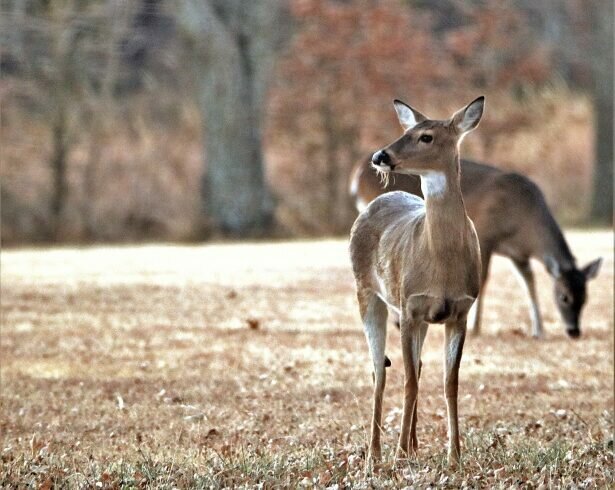After recent studies, there is now evidence that the Coronavirus is now spreading among deer after being infected by humans. Scientists found deer infected with the Coronavirus in several U.S states.
Infection among deer has been spreading from as far back as November, according to an article published in Nature where scientists swabbed the nostrils of white-tailed deer in Ohio and found evidence that humans spread the Coronavirus to deer at least six times.
However, even more alarmingly, in the Ohio State University study, 35.8% of the 360 deer swabbed were found to have a concurrent or past Coronavirus infection. It is estimated that the white-tailed deer population in the U.S. was only about 300,000 in the 1930s. Today, that population has grown to an estimated 30 million. There could be tens of millions of deer infected with the Coronavirus with deer’s current test positivity rate.
Federal scientists also collected 624 samples, finding that about 40 percent of the samples collected in 2021 had antibodies that indicated past infection.
With Coronavirus being rampant among deer as well as humans, there is an even greater risk of further mutations. Suresh Kuchipudi, a virologist at Pennsylvania State University, said, “The sheer possibility that these things are happening and it’s unknown makes this very unsettling. We could be caught by surprise with a completely different variant.”
The fears of a new variant that deer could prompt are not unwarranted either as earlier in the pandemic, minks were infected in Denmark, and Danish scientists found that a mink variant was subsequently spreading in Denmark.
With a large number of wild deer in the United States, and a significant amount of them being infected with the Coronavirus, it is feared that it can cause another new deadly variant. The researchers have already found six mutations in deer that are uncommon in people.
Moreover, there are also concerns of the Coronavirus being endemic even after it is eradicated from human hosts, as rampant infection among deer could spur new variants that can infect humans later on.
Kuchipudi also stated, “If we let the virus continue to circulate among humans, we are not only endangering the vulnerable sector of our population, but we could also be putting our animals and environment at danger.”

